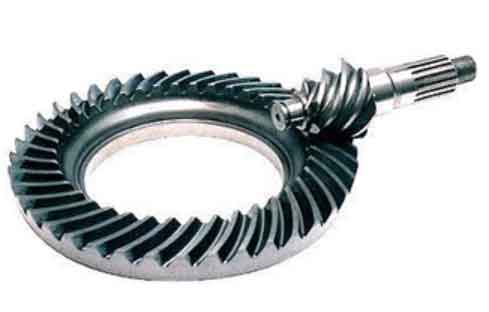Designing and manufacturing hypoid gears present several challenges due to their complex geometry and unique operating characteristics. Overcoming these challenges requires careful consideration and specialized techniques. Here are some common challenges in the design and manufacturing of hypoid gears and how they can be addressed:

- Complex Geometry: Hypoid gears have a complex tooth profile that combines elements of both spiral and bevel gears. Designing the tooth geometry requires advanced mathematical modeling and specialized gear design software. CAD/CAM tools can help generate accurate tooth profiles and optimize gear performance.
- Tooth Contact Analysis: Hypoid gears have non-linear tooth contact, which makes it challenging to ensure proper tooth engagement and load distribution. Conducting thorough tooth contact analysis using simulation software helps optimize the tooth geometry and minimize stress concentrations.
- Manufacturing Precision: Achieving the required manufacturing precision for hypoid gears is critical for their performance. The gear manufacturing process involves multiple steps, including gear cutting, grinding, and heat treatment. High-precision CNC gear cutting machines and grinding equipment, along with stringent quality control measures, are necessary to achieve the desired gear accuracy.
- Unique Gear Cutting Methods: Hypoid gears are typically manufactured using specialized gear cutting methods, such as face milling or face hobbing. These methods require specific tooling and machinery capable of accurately generating the complex tooth profiles. Skilled operators and proper tool maintenance are essential to ensure precise gear cutting.
- Gear Tooth Surface Finish: The surface finish of hypoid gears is critical for reducing friction, wear, and noise. Special attention must be given to achieve the required surface roughness through grinding or lapping processes. Post-processing techniques like superfinishing or shot peening can further enhance the surface quality.
- Gear Tooth Heat Treatment: Hypoid gears undergo heat treatment to improve their hardness and strength. However, the heat treatment process can introduce distortion due to the complex geometry. Careful control of heat treatment parameters, such as temperature and quenching methods, is necessary to minimize distortion and maintain dimensional accuracy.
- Gear Inspection and Quality Control: Hypoid gears require meticulous inspection to ensure their dimensional accuracy and proper tooth contact. Advanced gear inspection equipment, such as coordinate measuring machines (CMMs) and gear analyzers, are used to verify the gear geometry, tooth contact pattern, and other critical parameters.
Addressing these challenges requires a combination of advanced design techniques, specialized manufacturing processes, and skilled personnel. Collaboration between gear designers, manufacturers, and quality control experts is essential to overcome these challenges and ensure the production of high-quality hypoid gears that meet the performance and reliability requirements of the intended applications.
